You may not find this terribly rewarding unless you're included here, so this is a good time for casual and random browsers to turn back before they get too caught up in the sweep and majesty of the proceedings and can't let go.
Kim's visit to Staunton, Virginia, October 2023
(featuring Sherando Lake and the Frontier Culture Museum)

Our friend Kim Schmutzler from Wisconsin (and Minnesota) has come to visit (and to see the cats), and as she's an outdoors sort of person, what better place to introduce her to than Sherando Lake?
(In season, it's only $4 per car, with the national pass, so this will be at virtually no cost to us.)

It's a fine day, 7 October, and blessedly, though it's still 'in season', there's virtually no one else around.

The visitors' centre, with the classic CCC construction
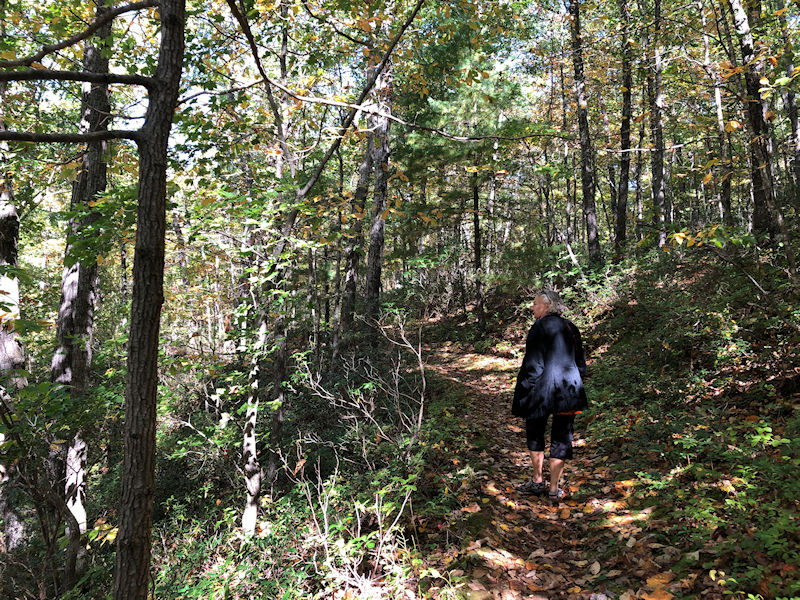
The 'Cliff Trail' starts from not far behind the visitors' centre and wends upward above the lake for about 20 minutes of moderately energetic walking.
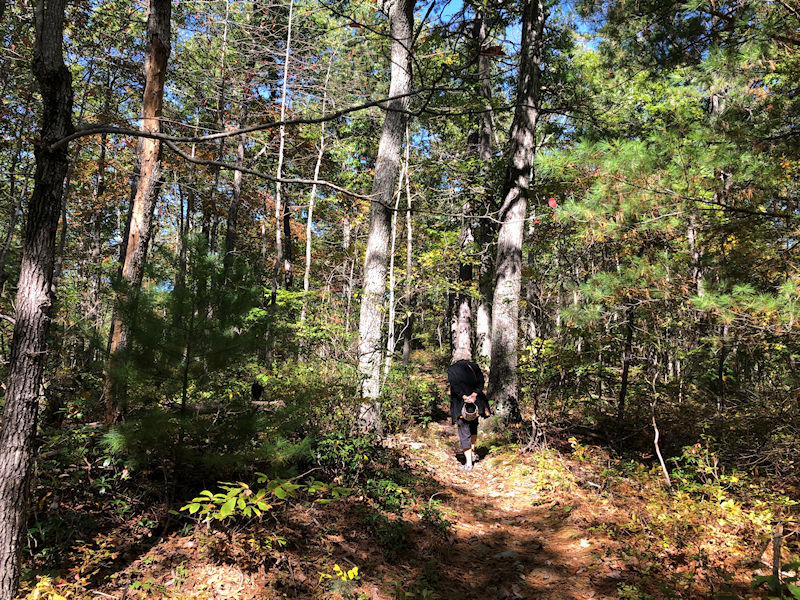
There are a few 'false summits' on the way up, twists in the path, short level patches, but after 18 walks here we're not fooled anymore.
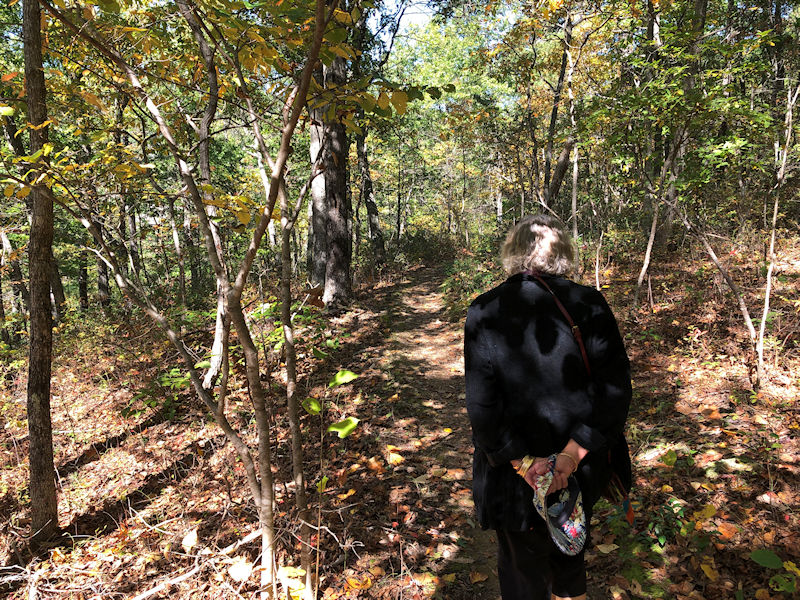
That, too, is one of the false summits, but once again we're not fooled. Soon, however, we reach the real high point, but all of this late summer vegetation makes a photo of the lake below entirely pointless.

Here's an imported scene from the high point, back in November 2021, without all that troublesome greenery spoiling the effect. |
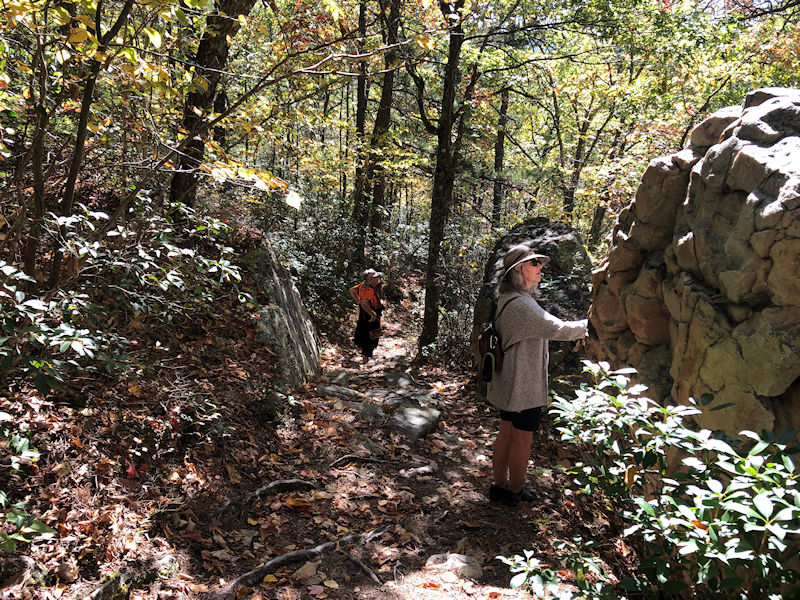
And now for the exciting descent down the zigzaggy path through the sort-of-cliffs, at a leisurely pace leaving time for Kim to examine the kinds of rocks available for viewing.

We proceed, cautiously. It was just round that next virage that, a few years ago, we were attacked by a huge, ferocious black snake, but we survived that unharmed.
The word 'attacked' might be slightly hyperbolic here; it's possible that it was just scuttling off into the bushes. 'Huge' may also be a little overly dramatic, but a 2-foot snake, when you've been startled, even if it's scuttling off, can be deeply unsettling.
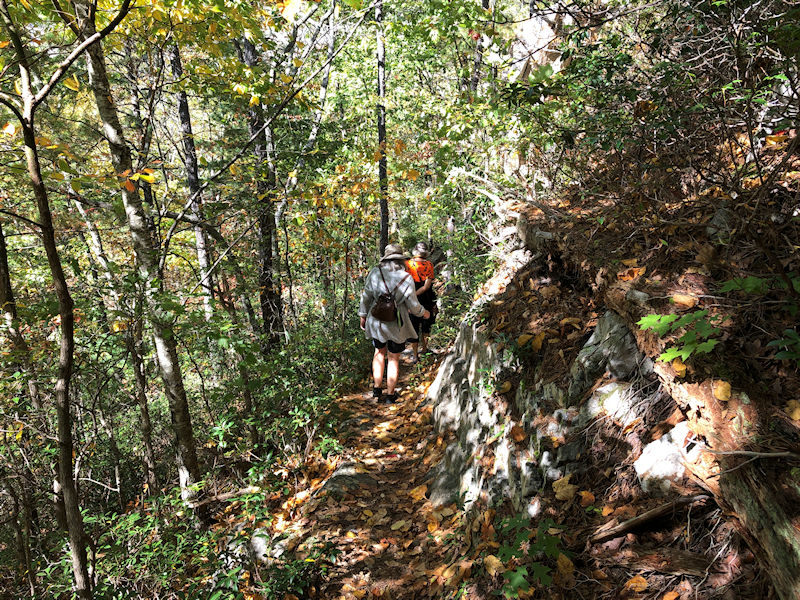
Another zag (or would this be one of the zigs?)
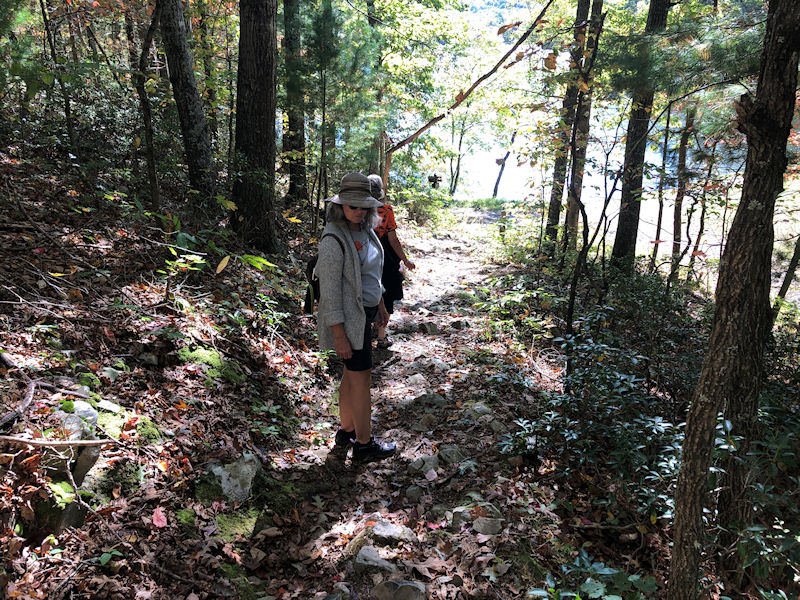
Not a ferocious snake this time

Down to the dam at the southern end of the lake

The 600 meter length of the beautiful lake
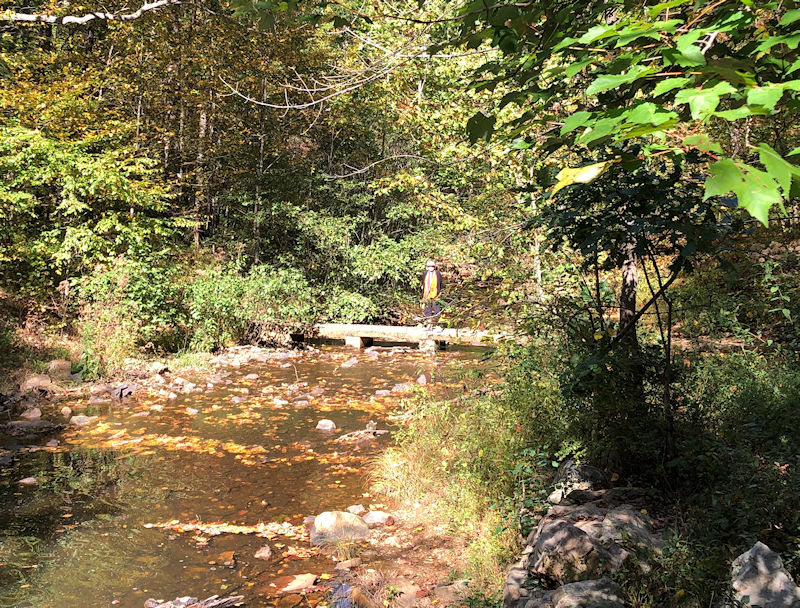
Kristin's awaiting stragglers on a majestic footbridge over the Williams Branch of the North Fork Back Creek, which . . .
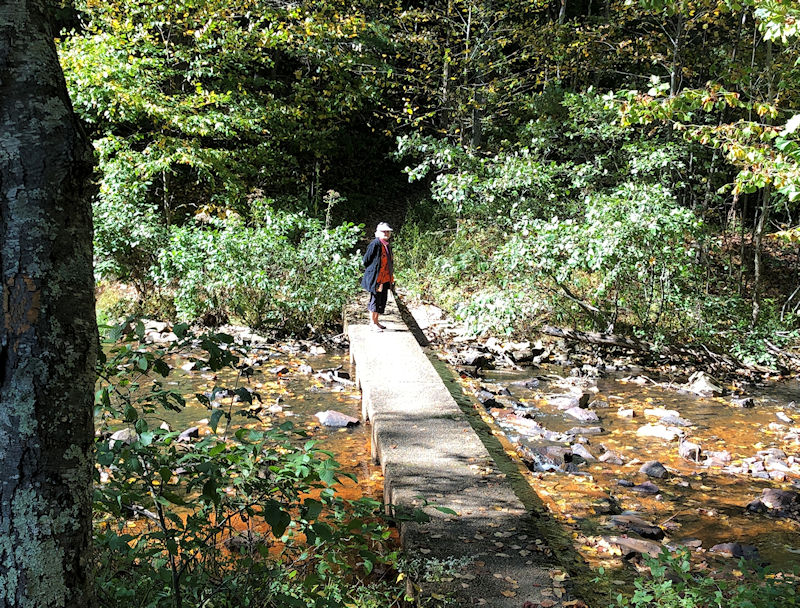
. . . carries on about a mile and a half to join the South Fork Back Creek to become the Back Creek, eventually to wander northward to join the South River (and ultimately, the Potomac).

Back over the upland trail on the western side of the lake, we descend into the vast array of picnic tables, grills, and bear-proof trash dumpsters. Which does not require a photograph here.
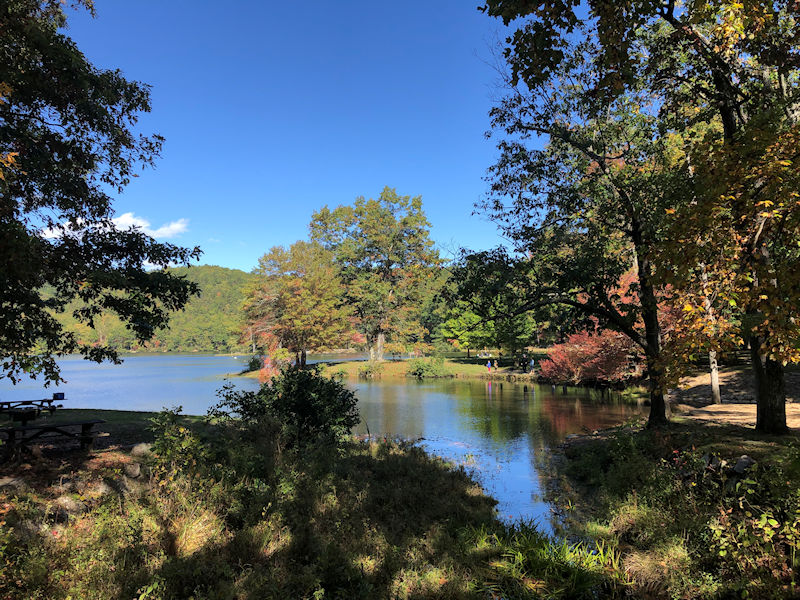
A last look at Sherando Lake, and then . . .
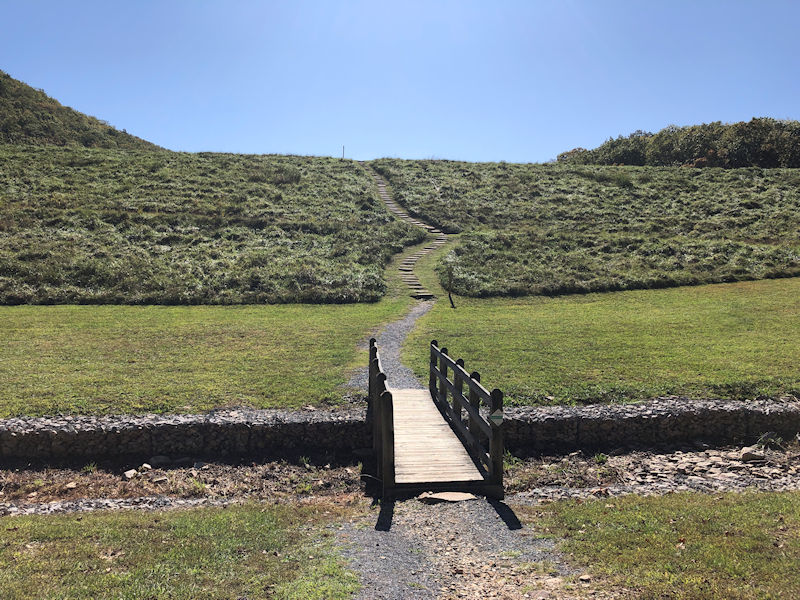
. . . recalling that, past a kilometre's worth of RV & tent campgrounds, there is also the 'Upper Sherando Lake', which is equally worth a brief visit.

There it is, looking southwestward -- up there about two miles on the left, one finds the famous Blue Ridge Parkway coursing its scenic way '469 miles through 29 Virginia and North Carolina counties, linking Shenandoah National Park to Great Smoky Mountains National Park'. That's not for us this afternoon, though.
The Frontier Culture Museum
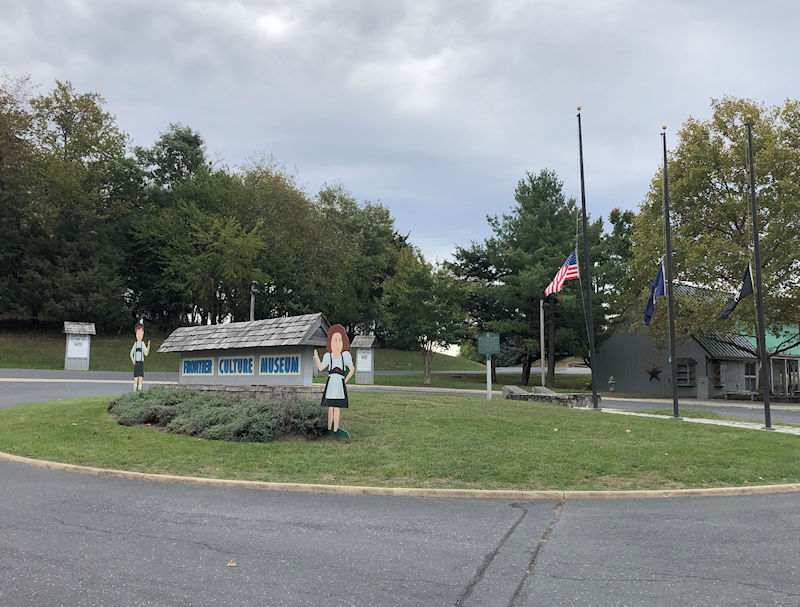
What's Staunton best known for? The Blackfriars Shakespeare Theatre, certainly; the Union Army attack in 1864; the famous Clocktower, but perhaps most of all, the Frontier Culture Museum.
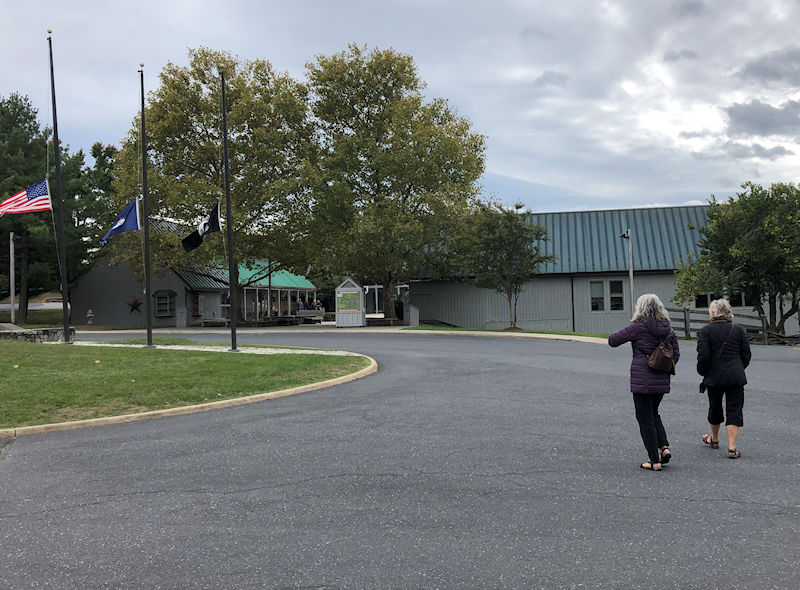
But why are the flags at half mast? Perhaps someone has died. Well, of course. But who? (Anyone we knew?)
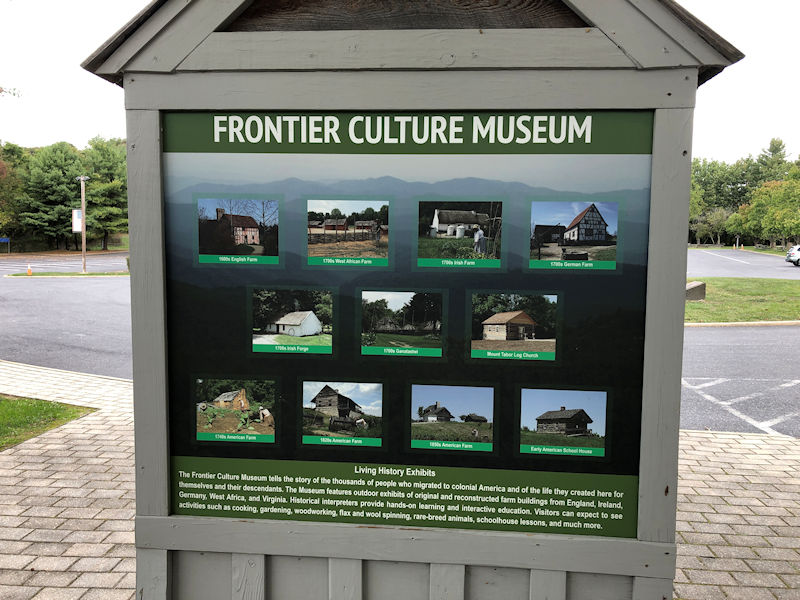
The purpose of the Museum is to demonstrate the physical and cultural attributes of the main streams of ethnic development of this area, which was first settled by Europeans in the mid-18th century mostly by Protestants from England, northern Ireland, and the Protestant Rhine-Palatinate in Germany. It's illustrated by period buildings transported over from those places and supplemented by information plaques and, in season, by docents demonstrating and explaining period arts, crafts, and household tasks.

The European focus is supplemented by a recreation of a small West African village, the source of the slaves carried over who eventually made cultural contributions of their own, and a hint of a recreated Native American camp for the same purpose.
(This, however, is the remains of the older African display -- there is an unfinished new one under construction a little farther along the itinerary route.)
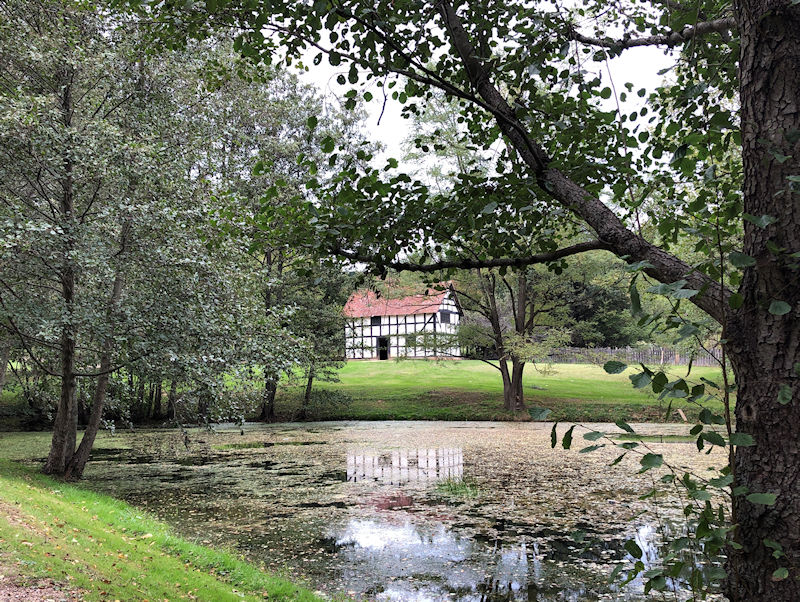
That's a 17th century yeoman's house from the English midlands.
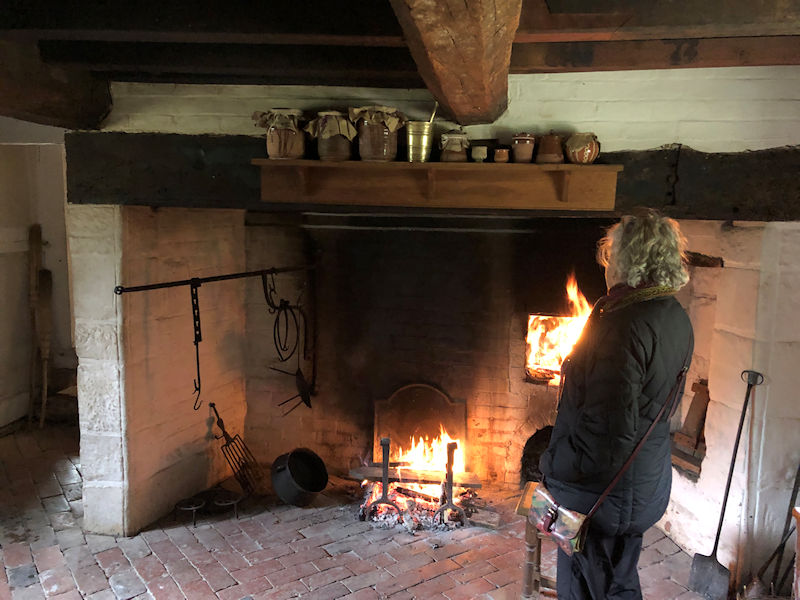
As the docent is explaining something about the people who might have lived here, we're warming up at the genial fire.

Kim admiring the nasty little swamp, and . . .

. . . chancing the path that runs round it . . .

. . . with its chaotic tree.
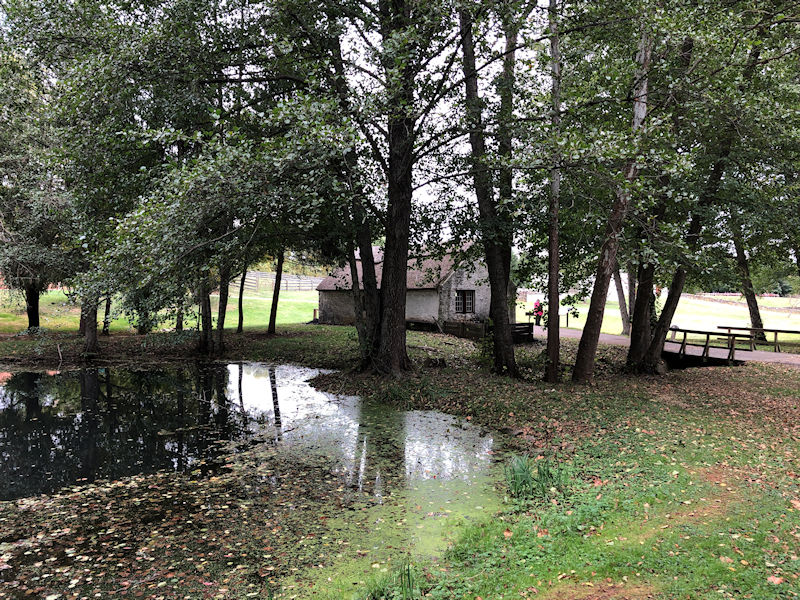
That's the Irish forge, from Ulster, where the Irish Protestants were (and are).
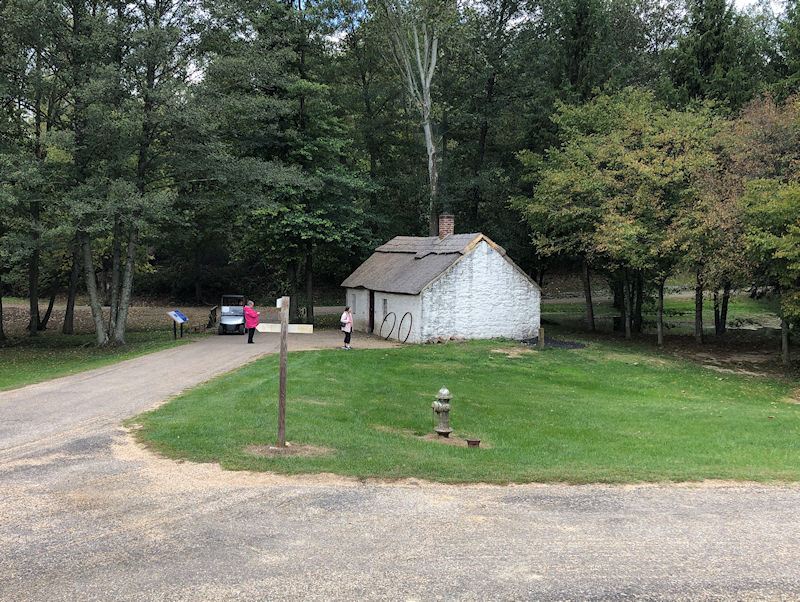
We're streaking round here today, covering the ground briskly, but oft have we perspired grossly in there observing the docent explain, and demonstrate, how nails, horseshoes, and door-hinges were hammered out in the old days. (You can buy some of their work in the gift shop.)
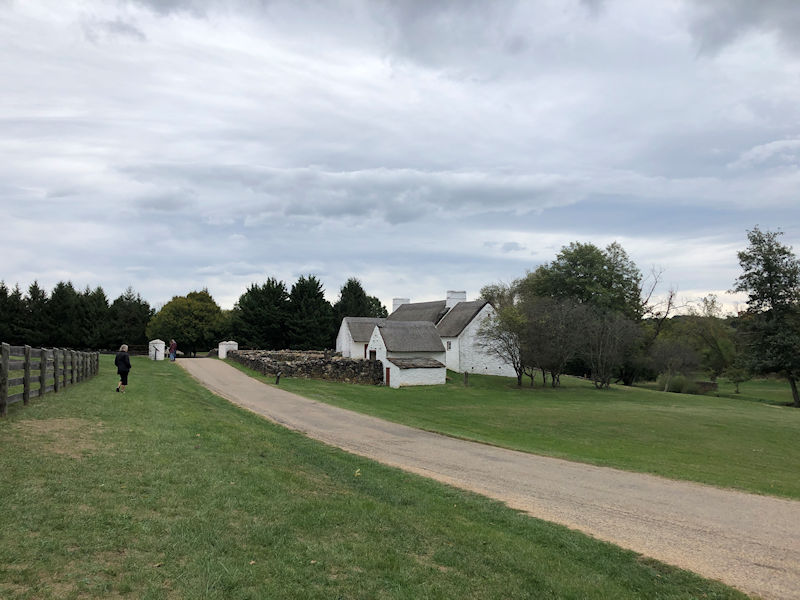
Onward to the northern Irish farm
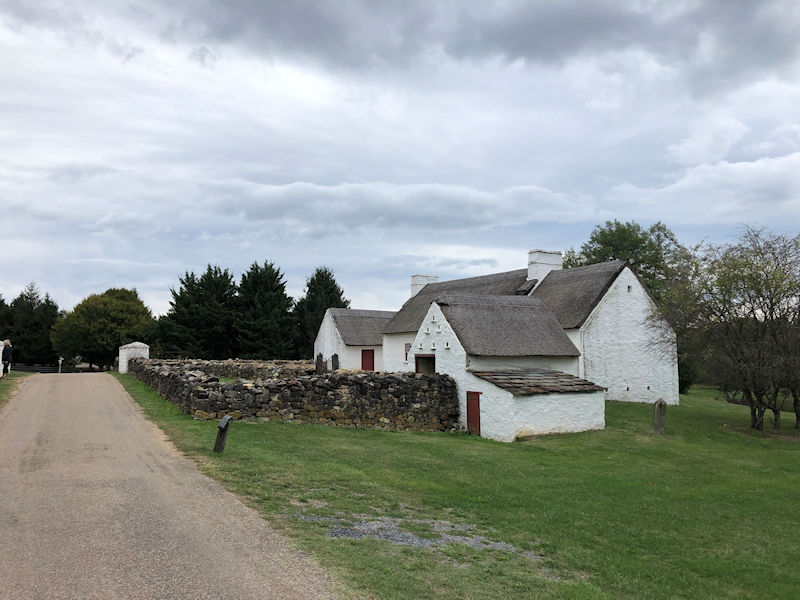
Each of these real-life exhibits is accompanied, not only by the docent (in season), but also by informative plaques with illustrations and informed explanations of the cultural origins and contributions of each group.
We've included much of that valuable lore here in the past, and this isn't the time to repeat that.
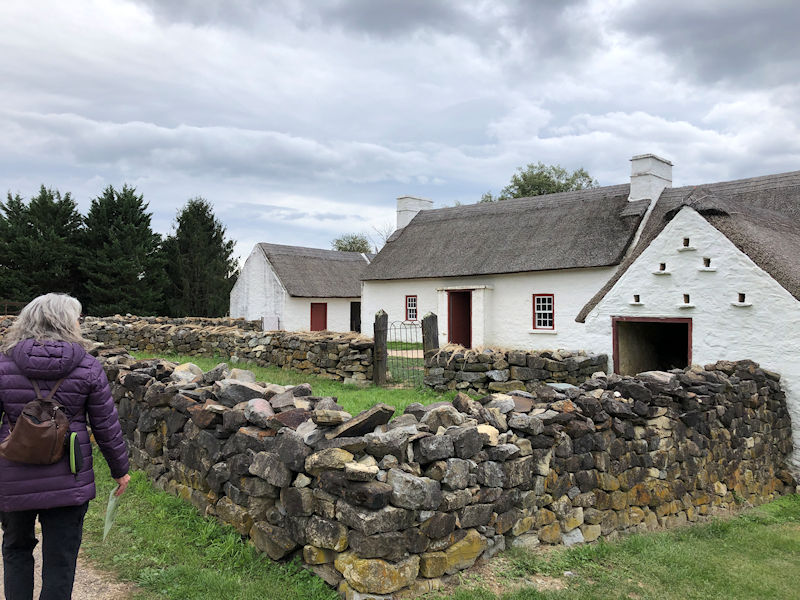
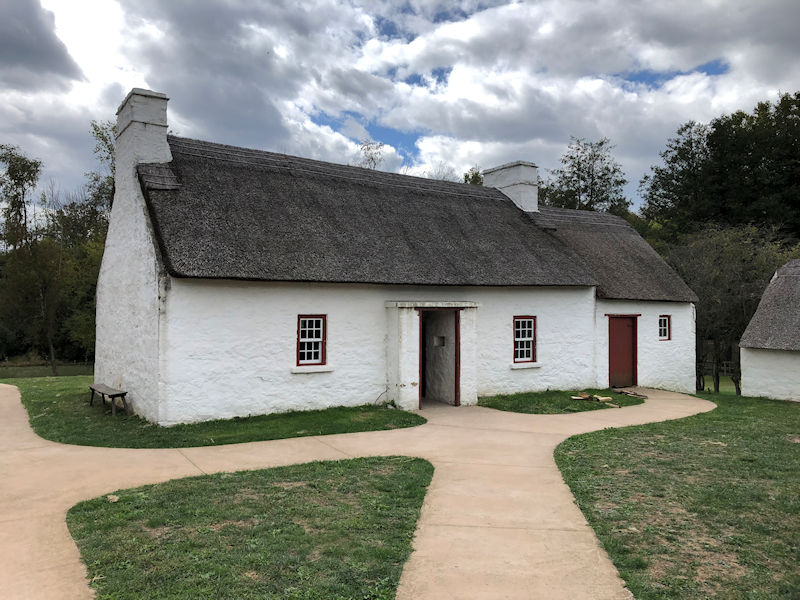
Let's peek inside.
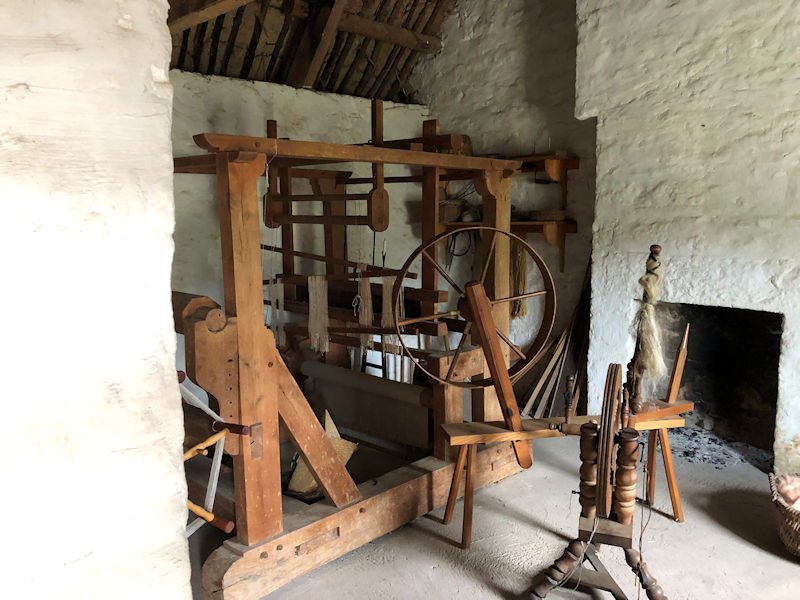
The Irish family that works together gets to eat together. Much of the time.
(Until the English invoke one of their Potato Famines.)
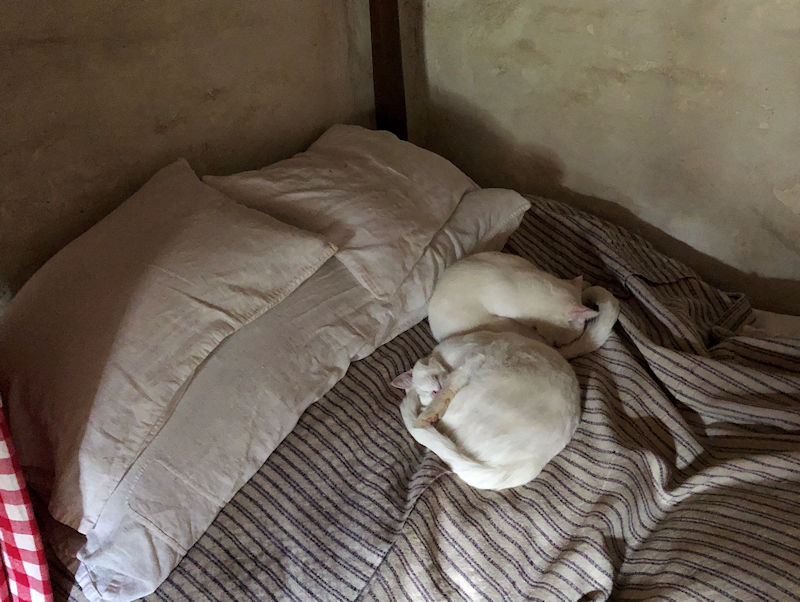
The present occupants

The Irish farm again, and then, onward, to . . .
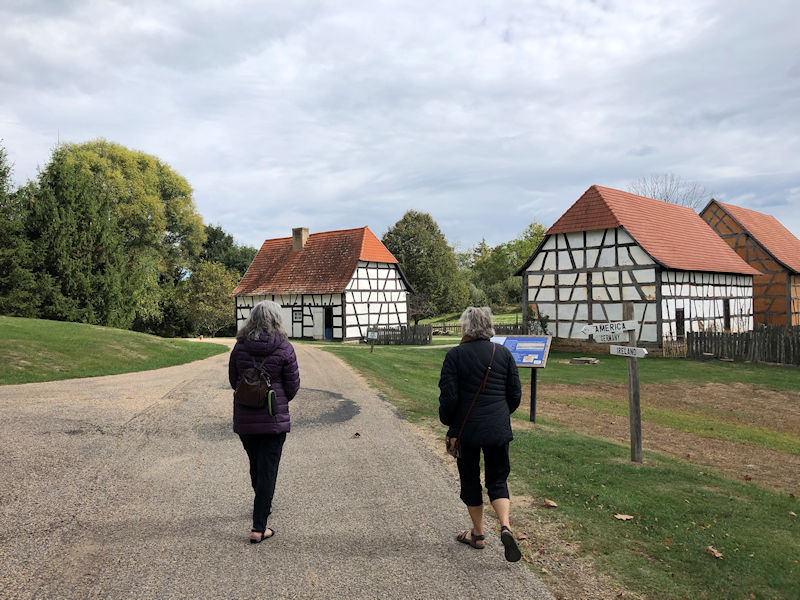
. . . the German farm.

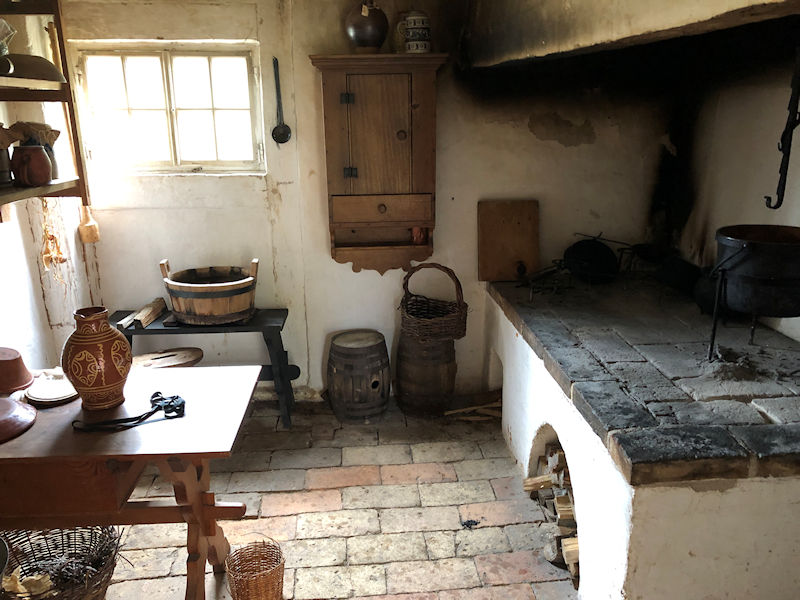
That's described as some kind of incredibly efficient sort of kitchen stove, which cooks stuff whilst warming the rest of the house as well. Something like that.
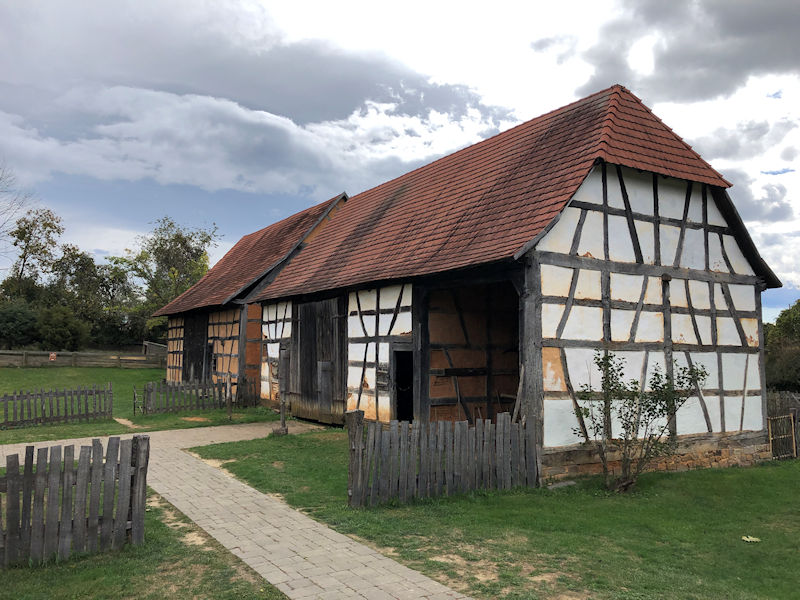
Outbuildings, and . . .
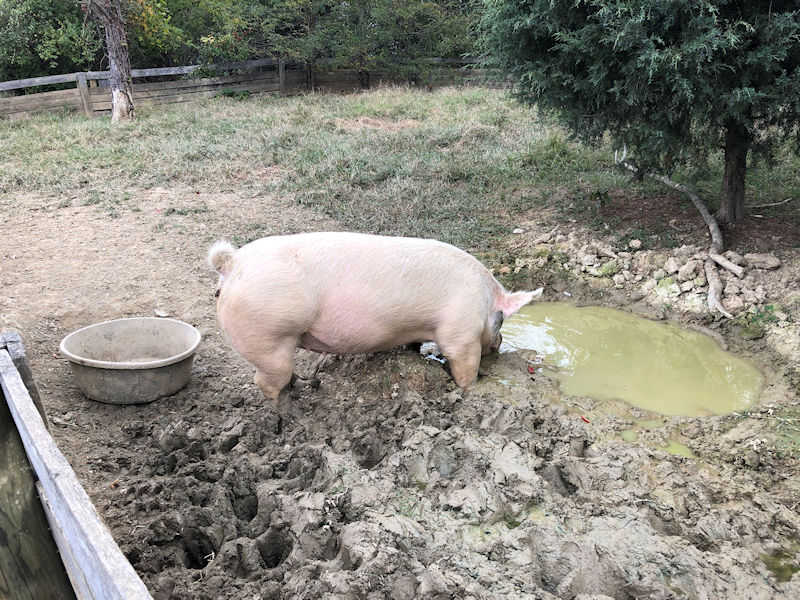
. . . 'Sunshine' (disgusting). (The other two monstrous porkers on site are 'Dalley', by the 1820s Shenandoah Valley farm, and another by the 1850s Valley farm, 'Trouble'. They both look very like this one.)

The German farmhouse viewed from Sunshine's horrible corral
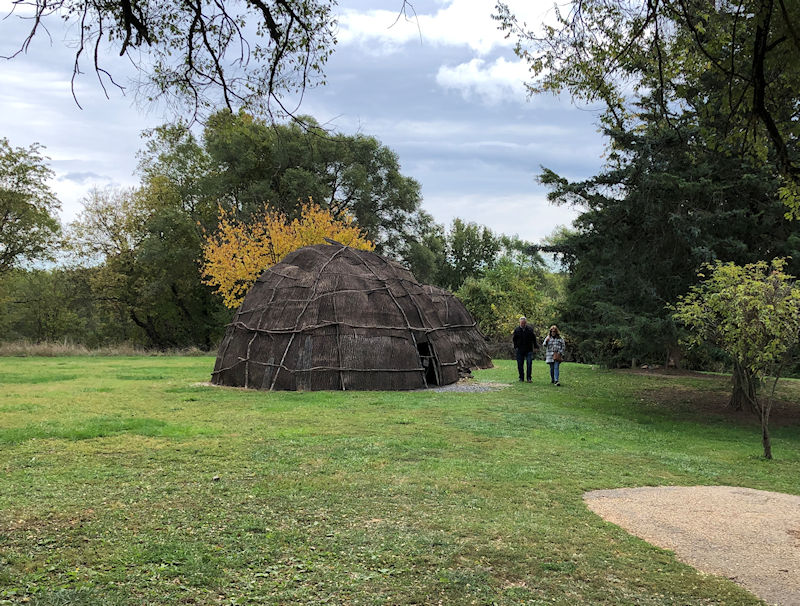
A bit farther along, there is this reconstruction of part of a small Native American community that might have existed in this region as the European settlers were moving in.
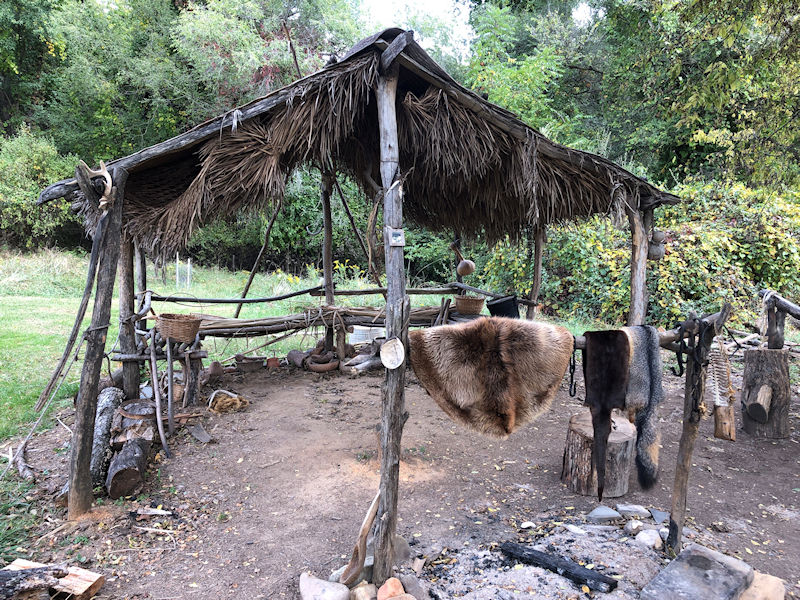
The panel descriptions of the Native American contributions to the frontier culture are imaginative and helpful, and the docents we've listened to here are knowledgeable and interesting.
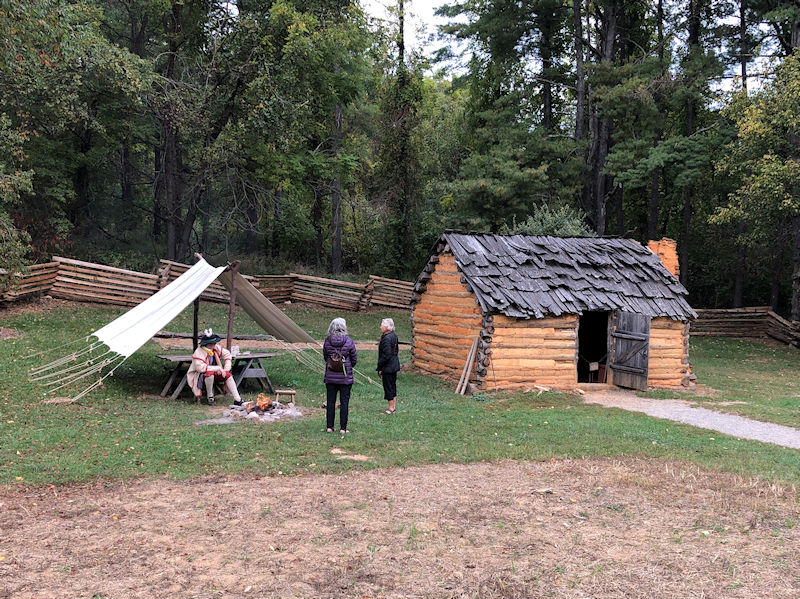
This is a reconstruction of a 1760s 'starter home' for European immigrants moving into the Shenandoah, or 'Great Valley', which was sort of a gateway to points west over the Appalachian mountains.
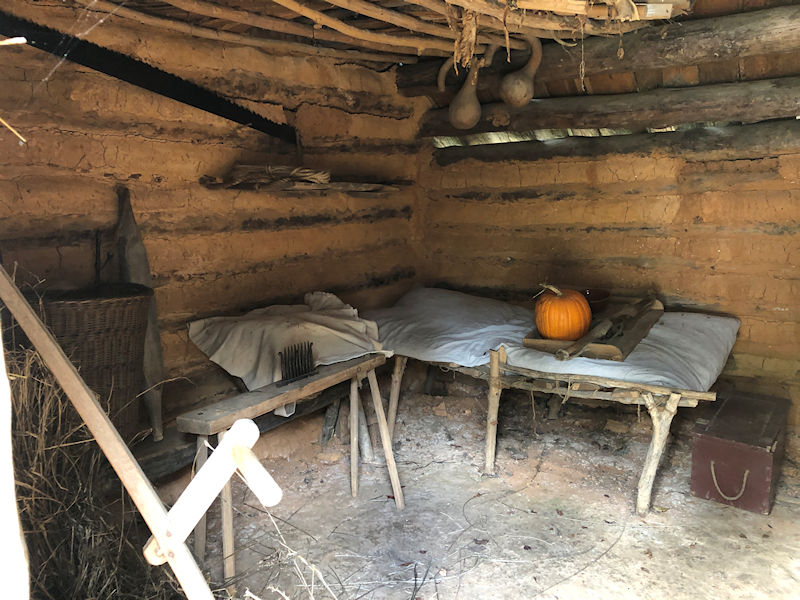
Cosy. But no wifi.
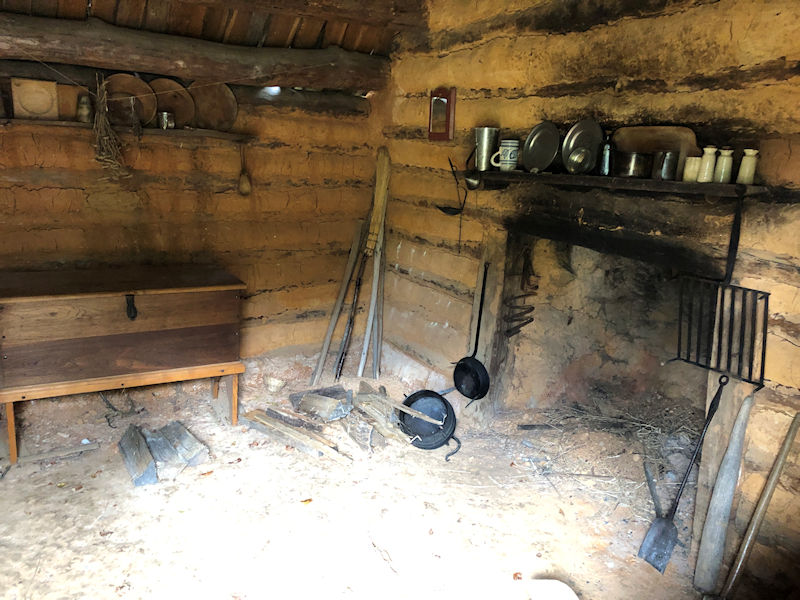
Very basic; minimalist
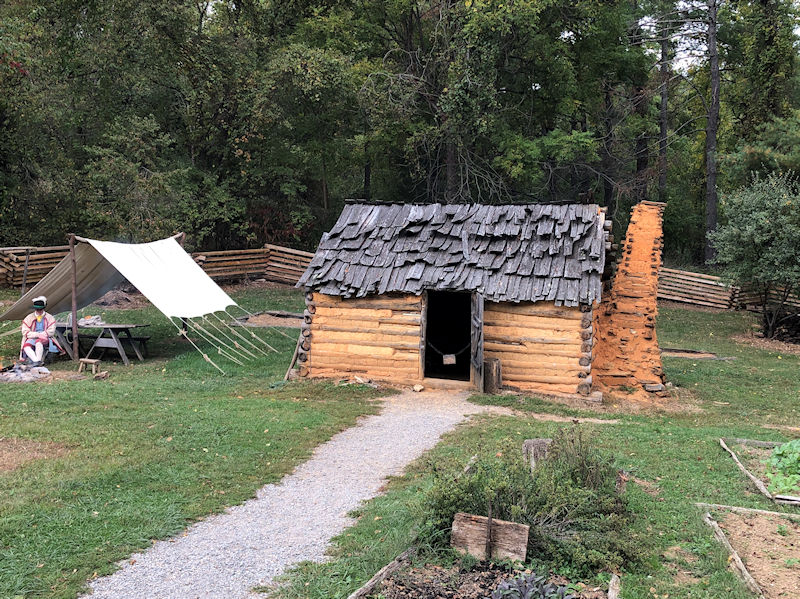
The bent chimney is evidently intentional, given that roofing. The costume of the docent certainly seems out of place by this hovel -- a plumed hat and kneelength waistcoat?
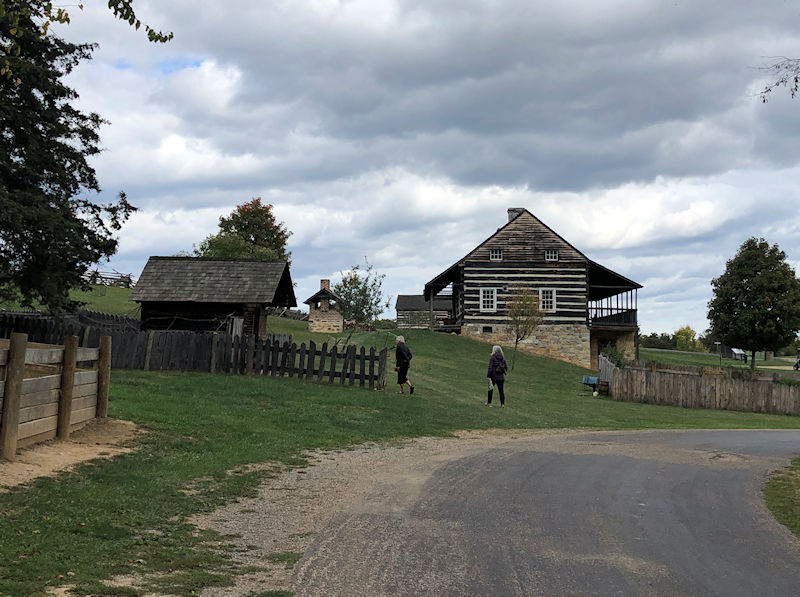
Moving on to the 1820s farmhouse and outbuildings, moved down from somewhere in the Valley and reassembled here. (Dalley's mucking about in the corral on the left, but we resist the temptation to include a photo here.)
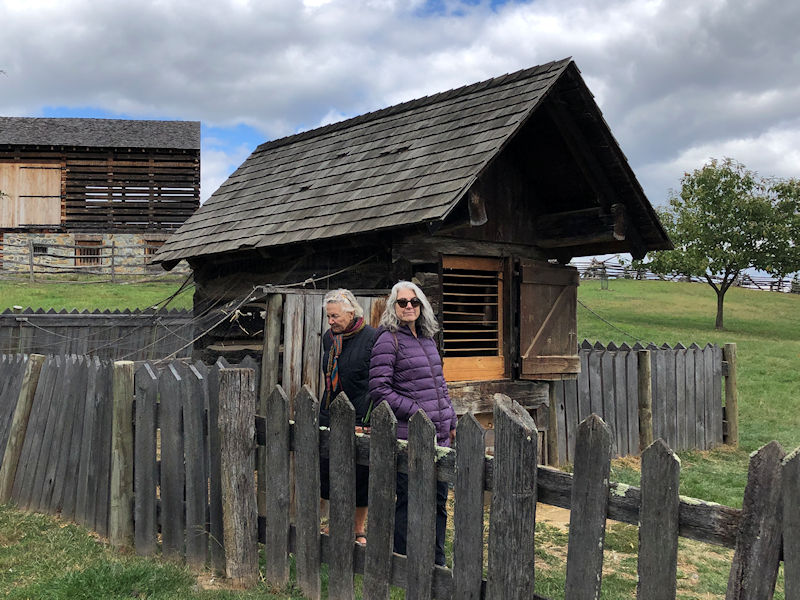
Poultry fans Kristin and Kim on a thorough inspection of the henhouse facilities
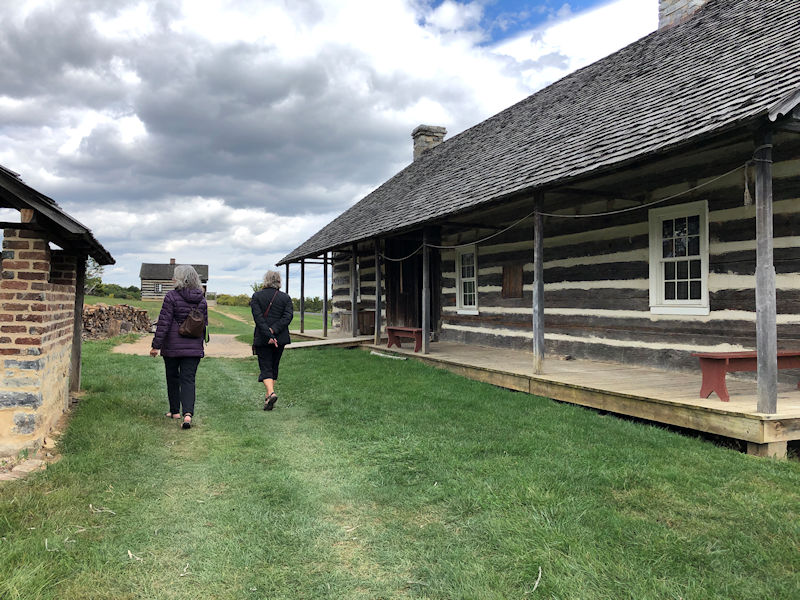
The 1820s farm, with the one-room schoolhouse on the horizon
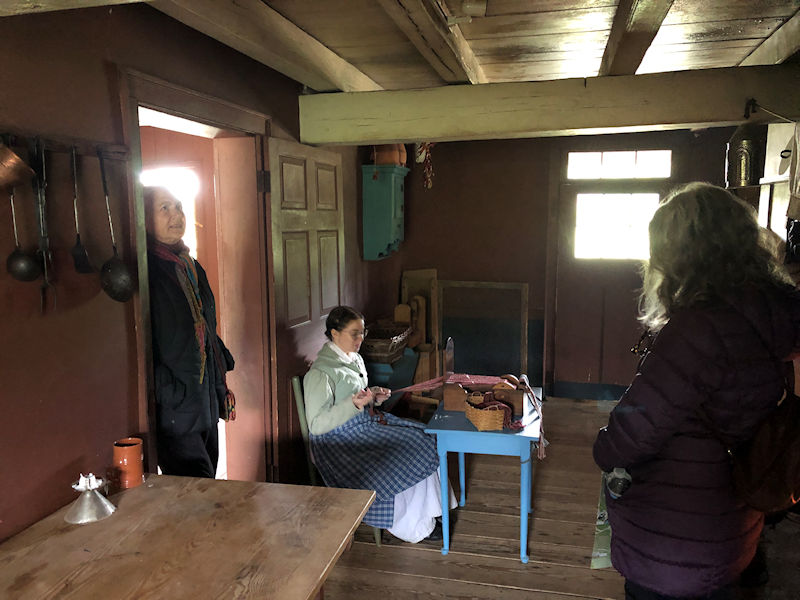
Brief knitting lessons
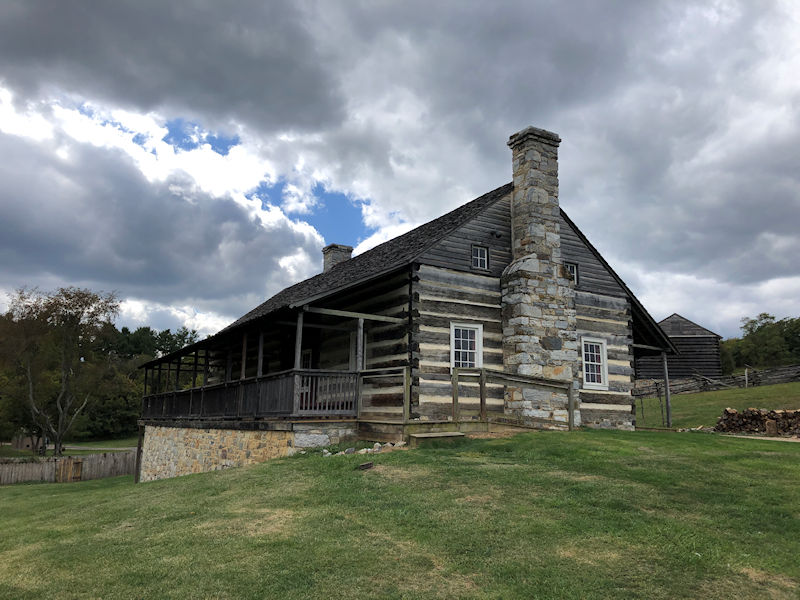
The 1820s house from the far side, and . . .
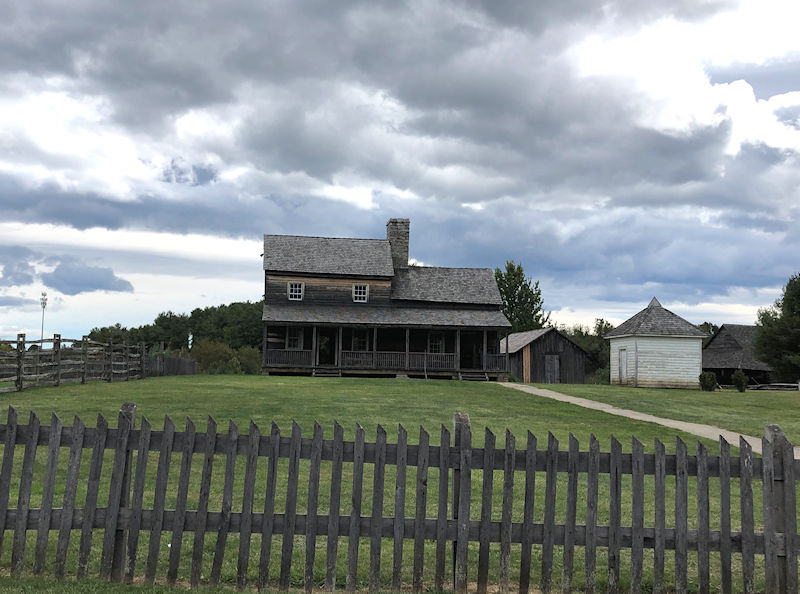
. . . the 1850s farm across the way, which we omitted from today's agenda because . . .
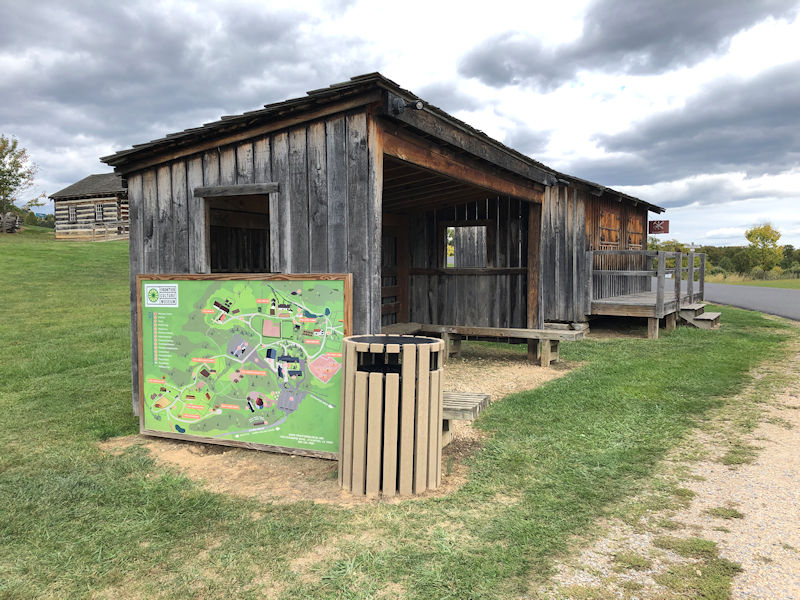
. . . one of the volunteer cart drivers happened by and we couldn't resist a ride back to base.
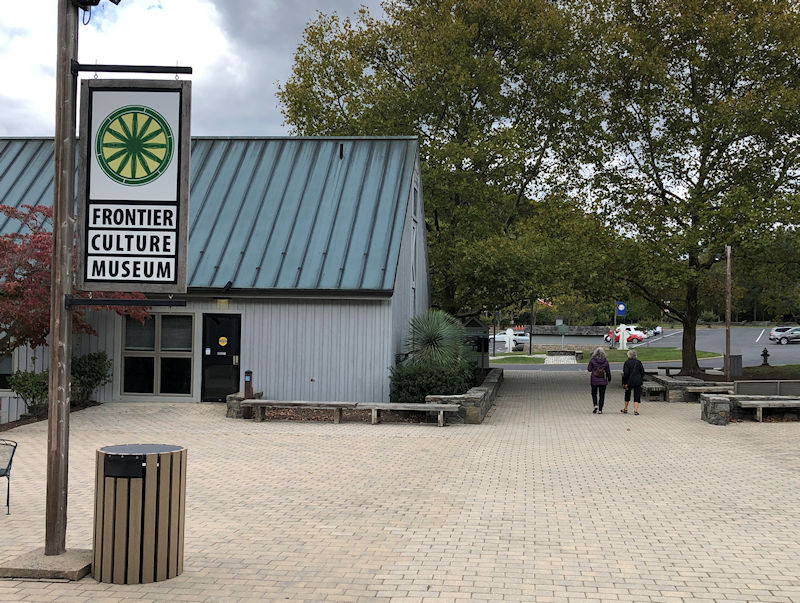
That was fun.
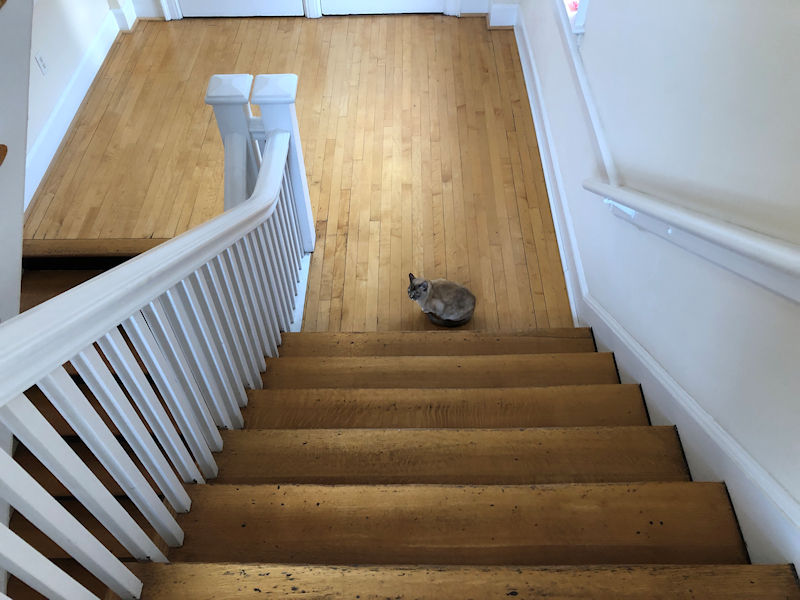
Choupette's been a little more wary and watchful very recently, as if . . .
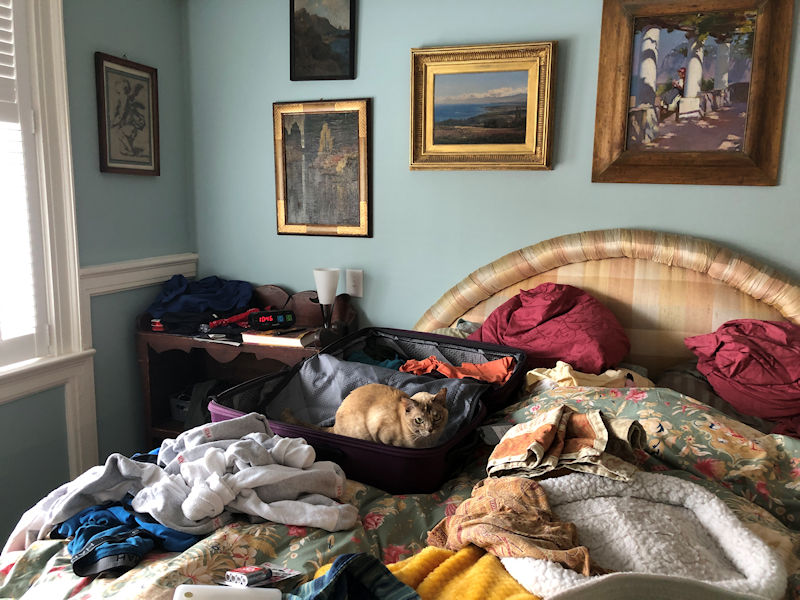
. . . she suspects that all of this elaborate luggage packing might not include her. 'Don't leave us behind!'
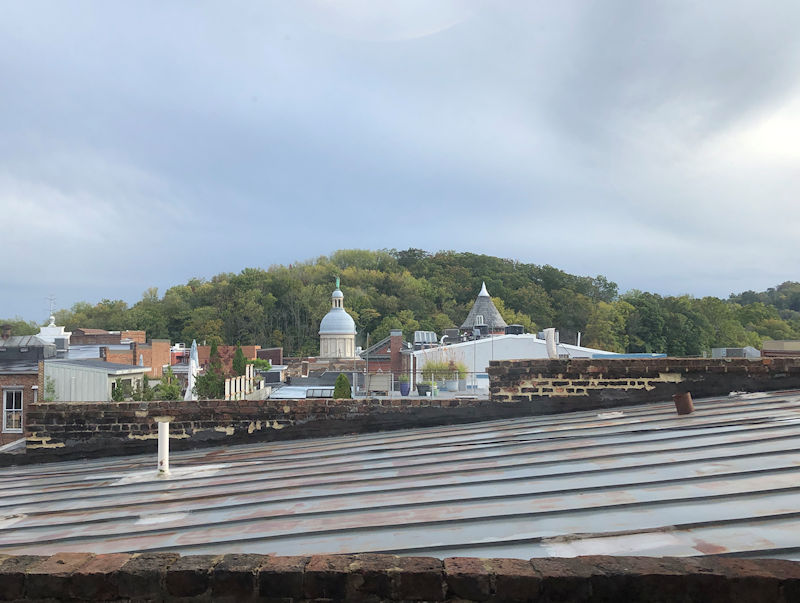
Unfortunately, we are . . . we must. Kim has come along from Minnesota to spend a few weeks, working remotely, and exploring the Shenandoah Valley and the Blue Ridge. Cat-sitting, and apartment-sitting, whilst we're in Castel Gandolfo and Naples (in Italy). Our grand neighbors Jack and Jacque, who are already devoted to Melvin and Choupette, will be receiving the cat-feeding baton for our last week as Kim returns to work, and . . .
. . . if our luck holds, we'll again be staring out our study window at the Staunton skyline, such as it is, in early November.
Next up: Arriving in Castel Gandolfo, Italy

 Dwight Peck's personal website
Dwight Peck's personal website


























































